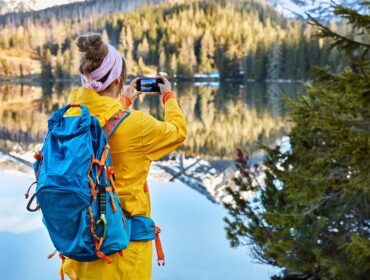If you’re an avid hiker, you’ve likely heard of the Pacific Crest and Appalachian Trails, but have you ever considered taking a 1,200-mile sojourn through the beauty of the Ice Age National Scenic Trail? While many major trails may cross over state lines, the Ice Age National Scenic Trail is strictly a Wisconsin resident, and is over 12,000 years in the making.
A Brief History
Fairly new to the major trail family, the Ice Age National Scenic Trail was established in 1980, and was named for the route that follows an eons-old path called the terminal moraine, the furthest advance of the last recorded glacial sheet of ice in Wisconsin. Given that chilly bit of history, it’s quite possible you could be walking where great woolly mammoths and other prehistoric creatures once strolled.
This is a somewhat unique trail system. While much of the trail is filled with the serene woodland experience one might expect, there are areas with raised wooden boardwalks through the woods, as well as sections that take you right through charming small towns. The designers of the trail wanted to create an interactive experience to connect visitors with the communities they were passing through.
Main Attraction
Both sectional and through-hiking are permitted, as well as snowshoeing, cross-country skiing, and camping. Parts of the trail also intersect with state bike trails, allowing cyclists the opportunity to explore these sections of the Ice Age National Scenic Trail.
Portions of the trail are still under construction, but once complete, the route will run from the northwestern border with Minnesota, east across the state, then south below Madison, before wandering back north towards the peninsula. The trail both begins and ends within two state parks, Interstate State Park in the west and Patawatomi State Park to the east. Some 100 hikers have already traversed the entire route, earning the title of “Thousand Milers.”
When to Go
Any brave camper looking to tackle this challenging trail should look to do so sometime between late fall and to late spring. This is considered the off season for the are and usually means a less crowded hike. Early spring is often a bit cold and rainy, while later in the season you’ll experience more mild, comfortable, temperatures.
Related article: Camper’s Guide: Yucatan’s Sian Ka’an Biosphere Reserve
Featured Image from Jonathan J. Castellon/Unsplash




